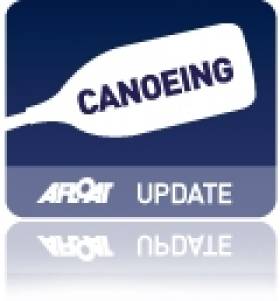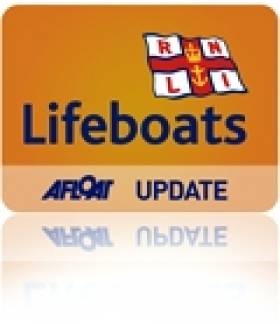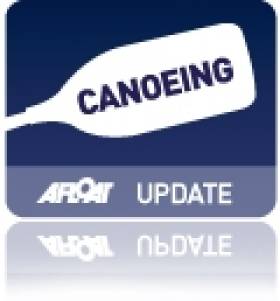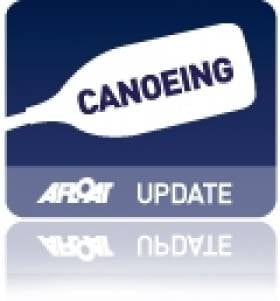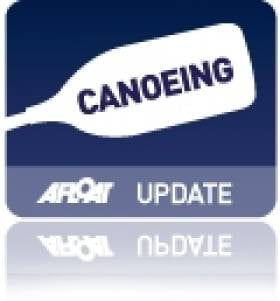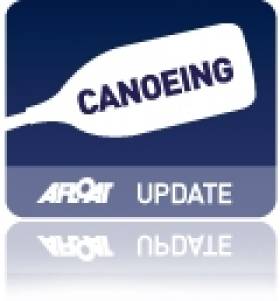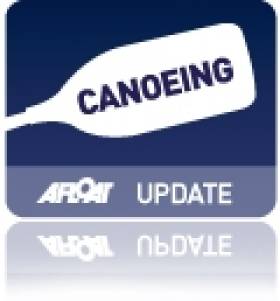Displaying items by tag: canoeing
Ireland's Hopefuls Test London Olympics Canoeing Course
Ireland's four Olympic canoeing hopefuls were invited to take part in an Olympic test event to mark one year till the start of next summer's games, The Irish Times reports.
Eoin Rheinisch and Ciarán Heurteau in men’s K1 joined Hannah Craig and Aisling Conlan in women’s K1 to compete in closed-door elimination rounds at Lee Valley Whitewater centre on Thursday.
The event mirrors the format of next year’s Olympic Games, so the field of 52 competitors in the K1 men's competition were set to be reduced to 21 for today's finals.
Rheinisch – who finished fourth in Beijing three year ago – made positive comparisons between the man-made course in north London and the Chinese venue.
Five Represent Ireland at Canoe Slalom World Cup
Eoin Rheinisch joins four others representing Ireland at the Canoe Slalom World Cup today.
Ciarán Heurteau, Patrick Hynes, Hannah Craig and Aisling Conlan round out the squad competing in Leipzig, Germany.
Rheinisch told The Irish Times that he was "shattered" after a week of hard training in Bratislava, aiming for the World Championships and Olympic qualification there in September.
"But they are the kind of sessions I need to be getting intermittently,” he said.
Big Weekend for Ireland's Canoeists in Balkans
Eoin Rheinisch made a good start in the K1 qualification round at the Canoe Slalom World Cup in Slovenia.
The Kildare native - who is recovering from a shoulder operation - finished 10th in the heats, qualifying for yesterday's semi-finals where he finished in 28th place.
The Irish Times reports that he described the performance as encouraging.
“I enjoyed myself today and that was my goal,” he said.
In other action from Slovenia, Hannah Craig failed make the semi-final in the women’s K1, while Patrick Hynes and Ciaran Heurteau missed out in the men’s K1.
Meanwhile in Serbia, Salmon Leap's Jenny Egan set a new Irish women's record of 1m 55.9 sec in the 500m semis at the European Sprint Canoe Championships in Belgrade, the Evening Herald reports.
She went on to finish ninth in both the 5,000m final annd 200m B final.
Fellow Salmon Leap member Barry Watkins placed fourth in the 500m B final and eighth in the 1,000m B final.
UK Canoeing and Kayaking Stats Published
The UK's Maritime and Coastguard Agency (MCA) has published its annual canoeing and kayaking report for 2010.
Among 456 incidents involving canoes or kayaks across the UK, which include nine fatalities, many were due to people underestimating weather and tidal conditions.
The report highlighted that many canoe and kayak owners in Britain do not wear essential safety kit such as buoyancy suits or lifejackets, do not include contact details in their craft, and are not a part of the CG66 small boat safety scheme which enables the coastguard to easily identify them.
There have also been increased reports of kayakers getting into difficulty which turn out to be kayakers fishing offshore. The MCA urges any kayakers doing so to contact the coastguard to avoid wasted searches.
The report is available to read and download HERE.
Girls Rescued After Strong Winds Sweep Canoes Out to Sea
The Irish Examiner reports that the girls were with an instructor from an adventure centre at Clogher Beach, Co Louth when they got into difficulty.
Lifeboat operations manager Declan Levins spotted the group in trouble from the Clogher Head Beach station and a rescue operation was immediately mounted. None in the group was harmed.
Entries Open for Junior Liffey Descent
Entries are now open for young canoeists to take part on the 2011 Junior Liffey Descent.
The race kicks off at 1pm on Saturday 28 May on the River Liffey running from Salmon Leap Canoe Club in Leixlip to the Canoeing Ireland Traing Centre at Strawberry Beds.
The entry form for this year's Junior Liffey Descent is available to download HERE.
Skills Tested on New Lagan Canoe Slalom
The BBC News website has video of a new Olympic-style slalom course on the River Lagan for canoeists to test their skills.
The professional facility was constructed at Shaws Bridge by local enthusiasts who have been training on the Lagan for some years, originally using little more than bailing twine and old brush staffs to mark out the course.
"When I look at the course today I think it's a huge achievement," Irish international Hannah Craig told BBC Newsline.
It is hoped that the new canoe slalom course will help broaden the sport's appeal in Northern Ireland.
K1 Sprint Head-to-Head in Prosperous Next Weekend
The Irish Canoe Union will host a sprint head-to-head regatta in Kildare next weekend.
All canoeists in classes K1 200m and 500m are welcome to take part in the event, on the Grand Canal in Prosperous on Saturday 26 March starting at 10.30am.
Heats will be seeded based on previous regatta performances and personal best times. The event finals will then be decided on fastest time from heats.
Entries are open till 8pm on Wednesday 23 March. Entry forms are available via the Canoeing Ireland website.
Liffey Odyssey for Canoeists This Saturday
The annual Odyssey on the Liffey canoe tour is scheduled for this coming Saturday 20 November.
Organised by the Canoeing Ireland Training Centre and the Wild Water Kayak Club, the tour runs from the Garda Boat Club in Islandbridge along the capital's historic quays to the East Link Bridge in the Docklands.
The event is open to all paddlers who have a minimum of Level 2 skills standard and who have their own canoe or kayak. Registration details are available on Canoeing Ireland's website at www.canoe.ie.
Canoeists Sought For Weil's Disease Survey
Canoeing Ireland is currently conducting a survey for new research at UCD aimed to reduce the risk of Weil's disease infection among Irish paddlers.
Those who have at one time contracted a medically confirmed case of Weil's disease (Leptospirosis) are being sought to complete a questionnaire to improve understanding and awareness about the disease in Ireland's waterways.
Weil's disease is a bacterial disease contracted by exposure to water contaminated by animal urine, often from rats. Symptoms are usually flu-like in the early stages, progressing to meningitis, liver damage and renal failure if left untreated.
Canoeing Ireland advises that all information submitted will be handled in the strictest confidence and will only be shared with researchers directly involved with the project.


























